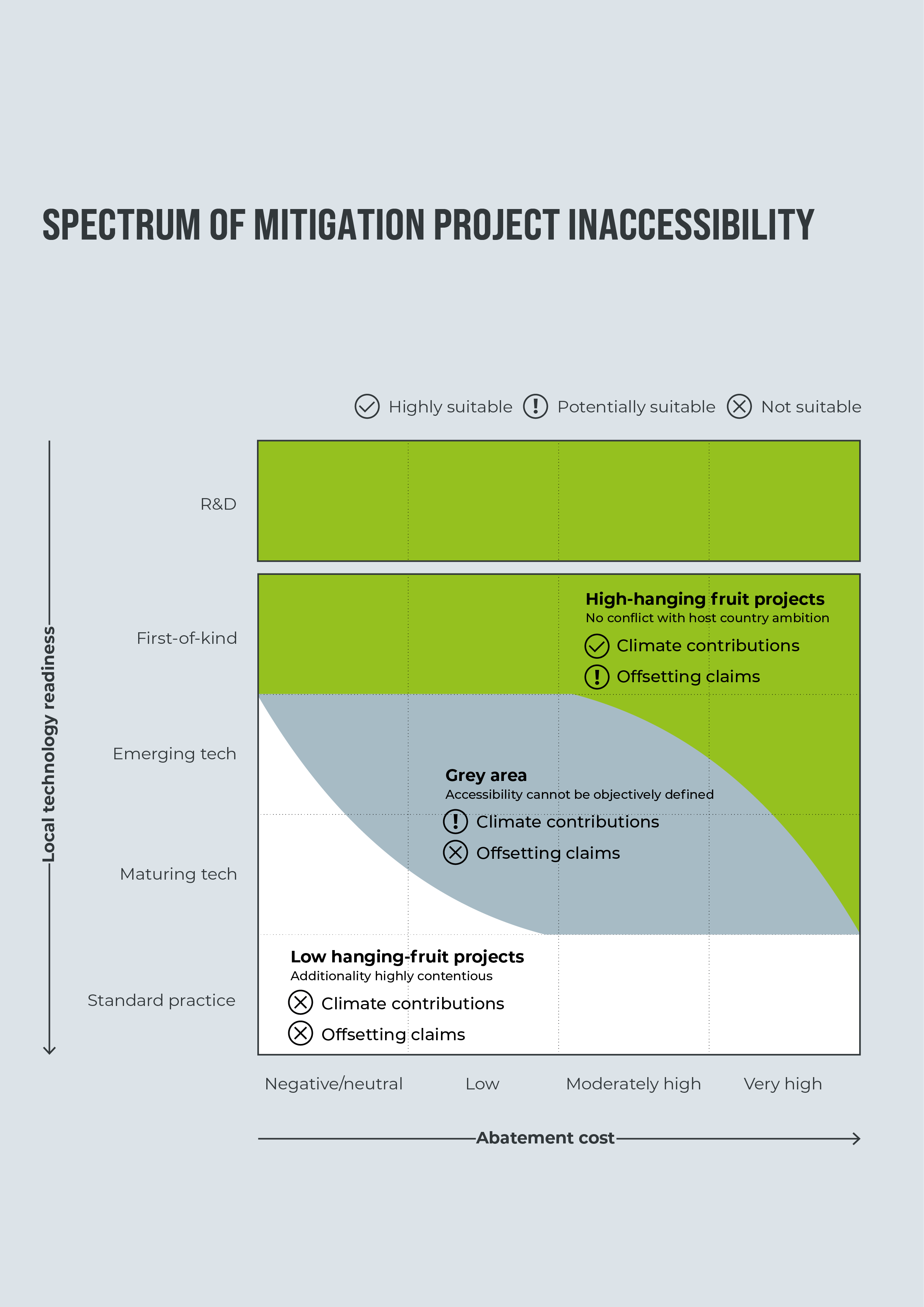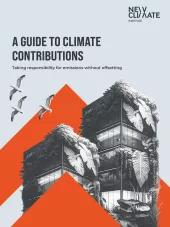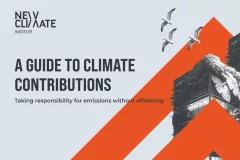The high hanging fruit of mitigation potential refers to the technologies and measures to decarbonise emission sources that remain otherwise entirely inaccessible to host country governments in the near- and medium-term future, on account of extraordinary costs or other insurmountable barriers that cannot reasonably be overcome.
For carbon crediting mechanisms used for compliance purposes or voluntary offsetting claims, we consider that high-hanging fruit projects represent the only solution to ensure that overall climate change mitigation ambition can be enhanced rather than compromised. But climate contributions not associated with offsetting claims may be the most appropriate and constructive channel for financial support to some high-hanging fruit mitigation projects.
We propose that projects can be identified as high-hanging fruits on account of their extraordinarily high costs, or if they introduce truly first-of-kind technologies. Those projects must also be compatible with net-zero emission technologies and transitions. Section B of this report identifies for illustrative purposes potential high-hanging fruit technologies and measures from specific emission sources including building heat in Mongolia, transport in Indonesia, and agriculture in Georgia.
It is highly challenging to identify high hanging fruit projects today, since a pipeline of projects is not readily available and will require interventions to develop. We propose the following recommendations for targeted interventions to support the development of a pipeline for high hanging fruit projects, and to channel voluntary climate finance with more transparency and integrity:
- Redefining additionality: Since market mechanisms will always search for the most cost-effective option within given parameters, it is only feasible for market mechanisms to play a role in financing the high hanging fruit of climate change mitigation potential if those given parameters are adjusted, such that the definition of project “additionality” includes a demonstration of project inaccessibility (section 2.2).
- Introducing labels for high hanging fruit projects: Given the currently very limited pipeline of high hanging fruit projects that could be implemented in the immediate future, some carbon crediting standards and registries may be reluctant to immediately adopt a sufficient definition of additionality. A labelling mechanism for high hanging fruit projects to clearly demonstrate the difference between “possible” and “guaranteed” additionality should be a minimum for ambitious standards and registries.
- Establishing funds for channelling climate contributions: There is an important role for either new or established initiatives to channel climate contributions towards projects that have not been reached by existing market mechanisms, such as less mature technologies or projects with less readily quantifiable outcomes.
- Corporate leadership: Given the limited readiness of the market to present a compelling project pipeline, companies that are interested to support high hanging fruit projects to demonstrate their climate leadership will need to play a driving role, by directly identifying projects, or contributing to initiatives that seek to do so.
- Proactive intermediaries: Established consultants and intermediaries that are already working with companies on their climate strategies and the channelling of their voluntary climate finance are in a pivotal position to accelerate the evolution of voluntary climate finance flows to high hanging fruit projects. In some regards, the sustainability of their own business models also depends on this. These consultants and intermediaries should play a proactive role in looking for and generating project ideas for high hanging fruit projects, as well as raising awareness amongst their corporate clients on the relevance – or necessity – for supporting such projects.









